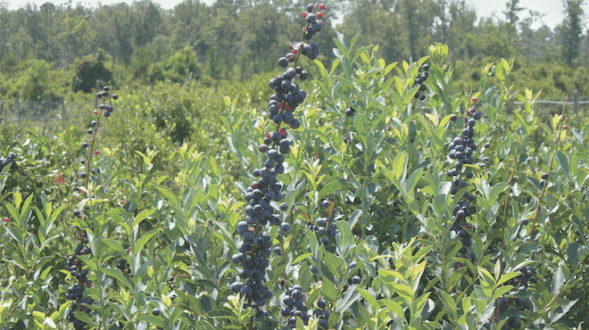
Mar 17, 2020Reaction to Southern highbush, rabbiteye studied
A study from the University of Georgia (UGA) recently examined how consumers react to Southern highbush and rabbiteye blueberry varieties.
Rachel Itle, an assistant research scientist with the University of Georgia, spoke at the Southeast Regional Fruit and Vegetable Conference in Savannah, Georgia, in February about the findings of her work.
Georgia produced 70 million pounds in 2016, according to the USDA’s National Agricultural Statistics Service, making it the fourth-highest producing state behind Washington, Oregon and Michigan.
Georgia growers in 2016 harvested 16,900 acres of blueberries, and Michigan was the only state with more (20,300).
The taste – perceived and factually provable – of different types of berries is of special interest to Georgia, which doesn’t have the climate for growing Northern highbush blueberry varieties.


Itle said the state’s mix is roughly 60% Southern highbush and 40% rabbiteye. “There’s a subjective idea that Northern highbush have a higher quality than southern highbush and rabbiteye,” she said. The danger for growers is the possibility of a lower sale price, or the exclusion of certain varieties from sales, and there’s a shortage of reliable research into fruit quality.
Work at the University of Georgia has focused both on postharvest storage of blueberries as well as consumer taste panel work and fruit quality/taste as measured by instruments.
A master’s thesis by UGA graduate student Kathleen Amaral examined differences and similarities in fruit quality traits using instruments as well as consumer taste tests. Fruit on two separate years was donated by Georgia blueberry growers.
The berries’ firmness, skin strength, seed traits, fiber traits and size were measured, as were chemical traits such as soluble solids content, total titratable acidity, anthrocyanin content, sugar profile, acid profile and antioxidant profile.
At Southeast Regional, Itle spoke in particular about the texture of the berries.
“Texture is arguably one of the most important fruit quality traits that drive consumer acceptability,” she said.
The rankings for firmness, skin strength and seed traits of rabbiteye, Southern highbush and Northern highbush – varied depending on the year, she said. But there were some results that showed some accounting of consumers’ taste.
For instance, the number of seeds in each variety seemed to vary between the two years of the study, but Northern highbush blueberries had lower counts of pump seed than Southern highbush, and both of the highbush varieties had less plump seed than rabbiteye.
“These results suggest overall that rabbiteye are higher for plump seed than highbush, and this may influence consumer acceptability of the overall texture – or why we hear about the seed,” Itle said. “So it’s not the number of seed, but it’s the number of the seeds that have an embryo or a plumper seed present.” Rabbiteye’s ratio of seed weight to berry weight also may be a factor, she said.
For the consumer taste panels, the berries were obtained the same week as the panel and bad berries were sorted out.The berries were also allowed to return to room temperature so participants could smell and taste them better. About 110 panelists participated in the tests during two years.
“The majority of consumers liked Southern highbush for overall liking and overall texture for both years, which is not what our subjective opinion or subjective biases have told us,” Itle said. “Some of the favorites of the Southern highbush berries are Farthing, Legacy and Camellia.”
She added that some of the Legacy berries were sourced from both Michigan and Georgia since it can be grown in both locations.
Consumers still liked rabbiteye and Northern highbush, Itle said.
“I thought this was one of the most interesting things … for overall liking for both 2018 and 2019, consumers equally liked rabbiteye to Northern highbush,” she said. “And for overall texture, they equally liked it in 2018, but there was a difference in 2019 with Northern highbush being favored. But, that’s really very contrary to what we commonly perceive.
“These results currently suggest that consumers like Southern highbush texture over Northern highbush and rabbiteye, which is very different to common subjective opinion.”
— Stephen Kloosterman, associate editor














